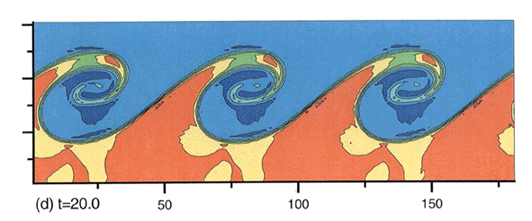

In the ocean engineering field, highly nonlinear phenomena on the free surface, such as the wave impact on a floating body, must be more intensely studied, although we still have a long way to go. The imapct phenomena include the wave breaking, splash and/or mixture of air. For this difficult topic, we need a prediction method which gives quantitatively good estimation of the impact force acting on a body. We believe that the Computational Fluid Dynamics (CFD) will be a powerful tool for this kind of analysis.
In the free-surface hydrodynamics, capturing the interface between water and air (or another fluid with different density) is a key to the success. For that purpose, the density function method, CIP scheme, level-set method, and so on have been developed. We are now testing these schemes and trying to develop a new versatile method.

Future plan in this research is to make it possible to predict accurately the impact pressure on a body which might be flexible and freely moving in waves.
 Link to
Useful Sites regarding CFD CODES
Link to
Useful Sites regarding CFD CODES Home Page of Free-Surface/Interface Dynamics Section
Home Page of Free-Surface/Interface Dynamics Section